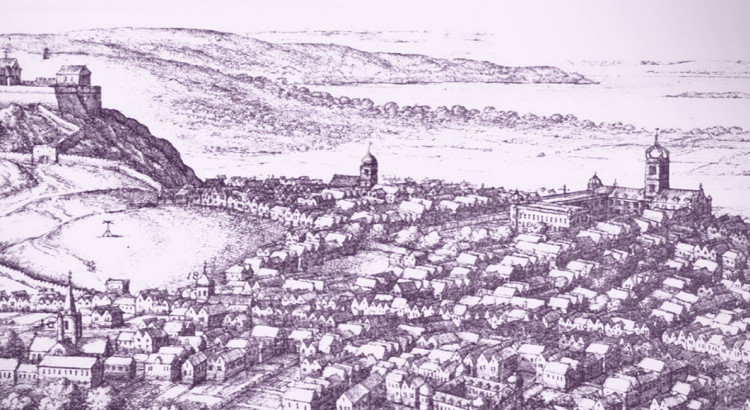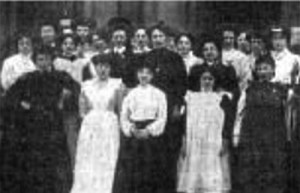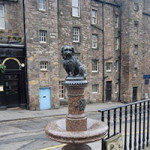EDINBURGH BAPTIST HERITAGE TRAIL
(Click to view specific section or scroll down)
- Background
- Cromwell’s Citadel in Leith
- Johann Gerhard Oncken
- The Tolbooth
- Leith Baptist Church
- Beulah Residential Care Home
- Baptisms at Bonnington Mill
- Baptisms at Canonmills
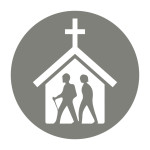
- Canonmills Baptist Church
- The White House
- Site of the Haldanes’ Tabernacle
- Site of the Circus Theatre
- Old Calton Burial Ground
- Grave of Sir George Sinclair
- Christopher Anderson’s mother’s home
- St. Cecilia’s Hall
- Magdalene Chapel
- Christopher Anderson’s family home
- The Rock Mission
- Candlemaker Hall
- Site of Bristo Baptist Church
- Archibald McLean’s grave
- Central (Baptist) Church
- Former Charlotte Chapel in Rose Street
- Charlotte Chapel in Shandwick Place
- Bristo Baptist Church
As advancing years make it unlikely that I can be guide and narrator for any more tours of Baptist sites in Northern and Central Edinburgh, the notes which I have compiled over many years are available here for anyone who wishes to use them.
As leaders of different parties added their special requirements, the notes expanded to the point where it was necessary for groups to select sites of interest to them – a full itinerary would have taken five hours. The notes assumed that the party would travel by coach and disembark to visit various places on foot. Individuals in cars, unaccompanied, have also used the notes, but leaving a car is impractical at some places.
Following publication of the bicentenary history of Charlotte Chapel in 2007, Revival in Rose Street, references to it were added to these notes. They cover only Baptist sites, and anyone conducting a tour should add their own comments on places of general interest.
1. BACKGROUND
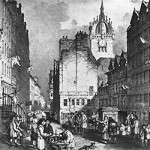
The Reformation in Scotland, from 1560 onward, was entirely Presbyterian in character, modelled on John Knox’s admiration for the way that John Calvin had organized Church and Society in Geneva. Although there were Baptists in Edinburgh in 1624, there is no record of them meeting as a church. They were seen as a threat to the establishment of Presbyterian Scotland, and so were persecuted and called ‘Anabaptists’, pejorative following the uprising in Munster in Germany in 1534-5. The first Baptist in Edinburgh known by name, Gilbert Gardin, was imprisoned in the Tolbooth Prison, beside St Giles Cathedral, for 18 months from 1643 for his beliefs. (Revival, p. 1 and Gilbert Gardin.) The first Baptist Church in Edinburgh, in 1652, was not started by native Scots but by officers, soldiers and chaplains in Oliver Cromwell’s English Army of Occupation – section 2 below.
2. CROMWELL’S CITADEL IN LEITH
The beginnings of recorded Baptist history in Scotland go back to the time when Oliver Cromwell’s Army of Occupation, the ‘Ironsides’, was garrisoned in Leith in the 1650s. Following his victory in the Civil War at Dunbar in 1650, Cromwell stationed his Army in four main Citadel towns in Scotland, one of them in Leith. The gateway to the Citadel is the only visible reminder of the first Baptists known to establish a church in Edinburgh. (Revival, p. 1 and Cromwell’s army of occupation.) It is on the south side of Commercial Street, about halfway along Commercial Street and directly opposite the pedestrian entrance to the Scottish Executive building. The short street is called ‘Citadel Place’; normally there is ample space to park in it.
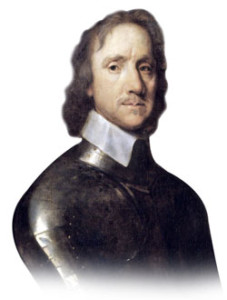 Although himself a Puritan in religion, Cromwell favoured and promoted the then unpopular practice of religious toleration and encouraged ‘those who shall worship God in any uther Gospell way … according to His mind reveilled in his word’. (Nicoll, Diary, pp. 83-4, 91.) In this climate, Baptists and Quakers and other Independents flourished. In Leith, as in the other garrisons, the ‘soldier-saints’ actively evangelised outside their camp, and this led to the formation of a vigorous and out-reaching Baptist church in 1652, which met in Leith and in Edinburgh on alternate Sundays – one congregation but meeting in two locations for the convenience of the believers in the two communities, Leith being an independent burgh until 1920. In Leith, the church met in the local Tolbooth – section 4 below. Their ‘Confession of Faith’ (Revival, p. 1.) was published at Leith in 1652, a re-publication of the ‘Confession’ of the London congregations ‘commonly, though mistakenly, called Anabaptists’.
Although himself a Puritan in religion, Cromwell favoured and promoted the then unpopular practice of religious toleration and encouraged ‘those who shall worship God in any uther Gospell way … according to His mind reveilled in his word’. (Nicoll, Diary, pp. 83-4, 91.) In this climate, Baptists and Quakers and other Independents flourished. In Leith, as in the other garrisons, the ‘soldier-saints’ actively evangelised outside their camp, and this led to the formation of a vigorous and out-reaching Baptist church in 1652, which met in Leith and in Edinburgh on alternate Sundays – one congregation but meeting in two locations for the convenience of the believers in the two communities, Leith being an independent burgh until 1920. In Leith, the church met in the local Tolbooth – section 4 below. Their ‘Confession of Faith’ (Revival, p. 1.) was published at Leith in 1652, a re-publication of the ‘Confession’ of the London congregations ‘commonly, though mistakenly, called Anabaptists’.
This was unacceptable to Scottish Presbyterians, who regarded toleration as a poisonous plant, but Cromwell’s New Model Army was in control of Scottish affairs. For the next seven years, Christians who cherished church independence and believers’ baptism were free to meet in Scotland and to promulgate their views. The Commonwealth Army left Scotland in 1659 and the dominant Presbyterian Church resumed persecution of Independents for the next hundred years. (Revival, p. 2.)
3. JOHANN GERHARD ONCKEN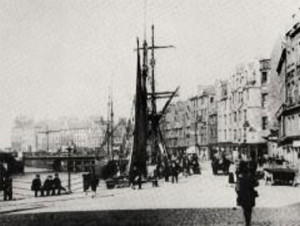
Few will have heard of this German, but the leader of one party was insistent that he should be included in the tour. To see where he worked for five years, go east from the Citadel, along Commercial Street and over the road-bridge which crosses the Inner Harbour, into Bernard Street. (Revival, p. 12, photograph.) Second right is Maritime Street (one-way). In 1814 it was known as Quality Street, and John Walker Anderson, a Leith merchant, worked there and may have lived over his business premises. From 1814 to 1819 he had an apprentice, Johann Gerhard Oncken, who is of interest to Baptists as ‘the Father of Continental Baptists, the Father of German Baptists and the Apostle of European Baptists, who helped direct and guide the growth of Baptists throughout Germany and across much of Europe for half a century’. Although he did not come to Baptist convictions until 1826, after he had become an evangelist and had moved back to Germany, Baptist historians want to see where he worked in Leith for five years.
Oncken was living in Hamburg, Germany, and had just been ‘confirmed’ as a member of the Lutheran Church, when Anderson visited Hamburg on business and felt that Oncken, aged fourteen, would make a good apprentice. He was formally indentured in July 1814. One of the first questions the Scotsman asked Oncken was whether he had a Bible. On being answered in the negative, Anderson took the young man to a bookseller and bought him one. He then took him to Leith in August 1814 and placed him in the care of his mother, a devout Christian, who took him to the Kirk, where the gospel made a deep impression on him. On completion of his apprenticeship, he remained in Leith for a short while, as a tutor, then moved to London in 1819, from where he was commissioned as an evangelist to his native country.
4. THE TOLBOOTH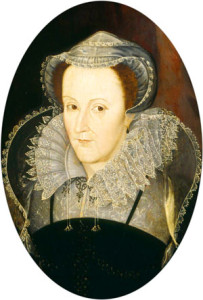
It was a short walk for the soldiers from the Citadel – section 2 – to the Leith Tolbooth, where the first Baptist Church in Scotland met on alternate Sundays. To see it after looking at Oncken’s workplace, go to the north end of Maritime Street, turn right onto Queen Charlotte Street, and Tolbooth Wynd is in front of you. The citizens of Leith built the Tolbooth in 1565, after Mary Queen of Scots, living in Holyrood Palace, intervened on their behalf and ‘desired’ the reluctant Edinburgh Council to permit their competitors in Leith to have a Tolbooth of their own. The area has been redeveloped but the Tolbooth remains.
If you have driven down Tolbooth Wynd, get (various ways) to Great Junction Street and turn right onto it and then turn left into Ferry Road. If you have not gone down Tolbooth Wynd, turn right out of Maritime Street and get onto Constitution Street and then turn right onto Great Junction Street and follow it to the traffic lights and then turn left into Ferry Road.
5. LEITH BAPTIST CHURCH
One group visiting Edinburgh wanted to include this church building in their itinerary. It is of no particular historical significance, although founded in 1845 and details are on its website. It is at 27-29 Madeira Street, which is the first opening on the right after you turn into Ferry Road.
Staying on Ferry Road, or after returning to it if you have visited Leith Baptist Church, continue west to the traffic lights at Newhaven Road, where you have an option. If you want to visit the site of the former Beulah Home, turn right at the lights into Newhaven Road and look on the right for the building, now a private house, at No. 134. If you don’t want to visit it, turn left at the lights and pick up the narrative at section 7, Bonnington Mill.
6. BEULAH RESIDENTIAL CARE HOME, 134 NEWHAVEN ROAD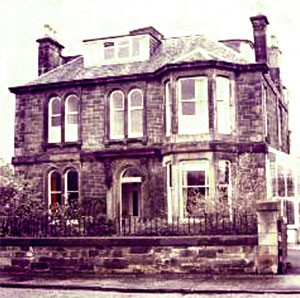
Beulah was the second Baptist Care Home in Scotland, open from 1956 to 2010; the first was the Robertson Rest Home in Dundee. The background was in the early twentieth century, when girls ‘in service’ in the New Town had nothing to do on their Sunday afternoon off, so Charlotte Chapel opened its door to them. Forty years later, when they reached retirement age at 60, they had nowhere to live, having been in ‘tied accomodation’ all their lives. Beulah was opened in 1956, but by 2008 changing social conditions forced its closure and sale on the open market. (Revival, pp. 301-2, 401 and Beulah Home.)
7. BAPTISMS AT BONNINGTON MILL
Response to preaching by the Baptist pastors with Cromwell’s Army of Occupation – section 2 – is recorded in Nicoll’s ‘Diary’ for 1653: ‘This year Anabaptists increased daily in this nation where never none was before. Many made open profession … so that thrice in the week, on Mondays, Wednesdays, Fridays were some dippit at Bonnington Mill. Some days would be sundry hundreds attending, and some fifteen baptised in one day …’ (Revival, p. 1.)
“Some days would be
sundry hundreds attending,
and some fifteen baptised in one day”
To reach the former Bonnington Mill, do a u-turn if you have visited Beulah and keep straight on Newhaven Road at the traffic lights or, if you have not visited Beulah, turn left at these lights from Ferry Road into Newhaven Road and, either way, cross the Water of Leith by bridge. The former Mill is now part of a housing and business development on the left (south) bank of the Water of Leith, with the address ‘72 Newhaven Road’. Associated with flour milling since the 12th century, the Bonnington Mill latterly comprised a set of 18th-century buildings, including a storey granary, an iron-framed corn mill, mill-house and offices. The mill was converted to electric power in the 1940s, closed in 1967, and several of the buildings were demolished in the late 20th century. The mill-house remains and a new development, called Bonnington Mill, was built.
From Bonnington Mill, go back up Newhaven Road and turn left at the traffic lights onto Ferry Road (again). After a quarter of a mile, turn left into Warriston Road, pass the crematorium and park at a suitable vantage point to see the Water of Leith.
8. BAPTISMS AT CANONMILLS
Bonnington Mill was convenient for the Citadel, but for believers in Edinburgh it was more convenient to baptize in the Water of Leith at Canonmills, a mile further upstream, a name derived from the mills which were owned by the Canons of Holyrood Abbey. Robert Carmichael’s baptism of two believers in 1765 was described in The Scots Magazine for November of that year:
‘On Monday November 25 an Antipaedobaptist administered the ordinance of Baptism to two adults in the water of’ Lieth hard by Canonmills near Edinburgh in the following manner the two persons being first stripped were cloathed with long black gowns and then went into the water along with their Minister who after repeating some words in their ordinary form took them by the nape of the neck plunged them down over head and ears and keept them for a little time wholly under the water.’ (Spelling and punctuation as in the Magazine.)
(Revival, p. 3. For Robert Carmichael, see section 20 below.)
Christopher Anderson baptised in the Water of Leith from 1808 to 1818, but did so further upstream, at Stockbridge, (Revival, p. 18), but the location for this is not included in these notes.
9. CANONMILLS BAPTIST CHURCH
Continue along Warriston Road. A one-way system requires cars to left-turn into Logie Green Road, then turn right at the traffic lights and almost immediately right again, at the next traffic lights, into Canonmills. (If walking, keep on Warriston Road to get there.) Canonmills Baptist Church is on the east side of the road.
When James and Robert Haldane adopted believers’ baptism in 1808 in their Tabernacle – section 11 below – the dissenting members formed a new congregation and called a former Church of Scotland minister. A year later he too became convinced about believers’ baptism, and along with seventeen others founded a Baptist church which moved in 1813 to Elder Street. It grew in membership to 150 in 1841 and to 286 in 1846, so in 1858 they built a large church in Dublin Street, which prospered. (Revival, p. 40)
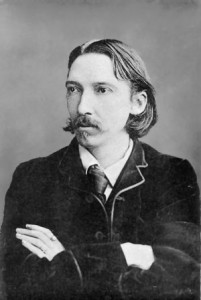
In 1885, they bought a former Primary School at Canonmills, made it into church halls, and used it for outreach. Incidentally, Robert Louis Stevenson, who was born a few hundred yards away across Canonmills Bridge, attended this school in 1857. When the Dublin Street building had to be demolished in 1987, because of structural problems, the congregation refurbished the halls, which became Canonmills Baptist Church. It continues the Scotch Baptist tradition of Corporate Ministry and no salaried pastor, but unlike the Scotch Baptists, it has long had ‘open membership’ and ‘open Communion’. See also the section ‘Edinburgh’s Ecclesiastical Heritage’ on this website, Second Walk.
If not going to visit the White House – section 10 – u-turn round the clock just to the north of the Canonmills Church and go back up the hill, past the Church, then go through the traffic lights into Rodney Street and continue uphill, through the round-about into Broughton Street and at the next roundabout park in the slip road on the left, Picardy Place, or wherever else you can find a parking place, to see the site of the Haldanes’ Tabernacle – section 11.
Alternatively, to see the site of a 1908-1910 attempt to provide a home for ‘rescued’ girls, turn left at the clock at the roundabout just along from Canonmills Baptist Church, go through the traffic lights in Brandon Street, and turn first left into Fettes Row. No. 11 is the second house on the right.
10. THE WHITE HOUSE, 11 FETTES ROW
This was the location of an attempt by Charlotte Chapel, from 1908-1910, to provide a home for up to twenty girls at a time who had been persuaded to leave a life of prostitution. It is now a private house. (Revival., pp.118-9 and White House.)
Continue eastward along Fettes Row, take first right into Dundonald Street, first left into Drummond Place, first left into London Street and three-quarters round the roundabout into Broughton Street. At the next roundabout park in the slip road on the left, Picardy Place, or wherever else you can find a parking place, to see the site of the Haldanes’ Tabernacle, next section.
11. SITE OF THE HALDANES’ TABERNACLE
The Playhouse Theatre, near the top of Leith Walk, was built on the site of the Haldanes’ Tabernacle. The background was that Christianity was at a low ebb in Scotland at the end of the eighteenth century. The Haldane brothers, Robert (1764–1842) and James (1768–1851), who had separate careers, were both (independently) converted about the same time, when Robert was 30 and James was 28. They began evangelistic work which led to revival in Scotland in the closing years of the eighteenth century and the early years of the nineteenth.
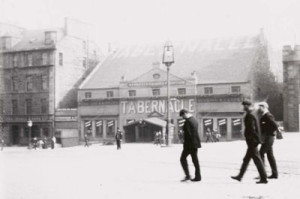 Once committed to Christ, Robert sold the family estates at Airthrey Castle (site of the present University of Stirling) and devoted his wealth to evangelistic and missionary enterprise. He started training schools for evangelist-preachers, and built preaching ‘Tabernacles’ in Scottish centres. His brother, James, emerged as a powerful preacher. When Robert built the Edinburgh Tabernacle, James was quickly and unanimously called as its minister. His ministry, commenced in 1799, continued for fifty years. The large building seated 3,200, but James also preached frequently on the near-by Calton Hill to crowds numbering 5–8,000. Both Haldanes became Baptists in 1808. (Revival, pp. 6-8, 53 and Haldane Brothers and Haldanes Tabernacle.)
Once committed to Christ, Robert sold the family estates at Airthrey Castle (site of the present University of Stirling) and devoted his wealth to evangelistic and missionary enterprise. He started training schools for evangelist-preachers, and built preaching ‘Tabernacles’ in Scottish centres. His brother, James, emerged as a powerful preacher. When Robert built the Edinburgh Tabernacle, James was quickly and unanimously called as its minister. His ministry, commenced in 1799, continued for fifty years. The large building seated 3,200, but James also preached frequently on the near-by Calton Hill to crowds numbering 5–8,000. Both Haldanes became Baptists in 1808. (Revival, pp. 6-8, 53 and Haldane Brothers and Haldanes Tabernacle.)
If the Heritage Trail is undertaken by bus, the cinema and restaurant complex to the right of the Playhouse Theatre is a suitable venue for a ‘comfort stop’.
12. SITE OF THE CIRCUS THEATRE
Opposite the Playhouse Theatre, look across (or go across) to the site of the Circus Theatre, now demolished and replaced by the south part of St Mary’s Roman Catholic Cathedral. James Haldane began to preach here and Christopher Anderson was converted here. It was here that Andrew Fuller’s preaching in 1799 awakened Christopher Anderson’s interest in India, and so led, indirectly, to the formation of the first ‘English’ Baptist Church in Edinburgh. (Revival, pp. 5-9 and Circus.)
13. OLD CALTON BURIAL GROUND
Continue up to the top of Leith Walk and turn left into Waterloo Place. The entrance to the Burial Ground is on the south (right) side of Waterloo Place, about two hundred yards up the main road from the east end of Princes Street. Christopher Anderson (1782–1852) is buried here (as is David Hume, the philosopher) and their graves can be seen. (Revival, pp. 32, 48 and Old Calton Cemetery.) Enter by the main (only) gate, climb the steps and follow the path to the top of the cemetery, turn right (westward) down the main gravel pathway as far as it goes, then turn right again (northward) and Anderson’s gravestone is on the north wall, the boundary with the main road. Keep together – the cemetery is walled and undesirable characters may frequent the area.
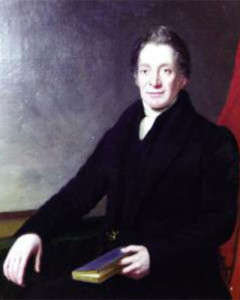
Anderson is best known as the founder of Charlotte Chapel, now the largest membership Baptist Church in Scotland. He began his ministry in 1806 in a district of Edinburgh known as the Pleasance, which can be seen over the south wall of the burial ground and over the valley with the railway running through it, but the area has been redeveloped and there is now nothing in the Pleasance to see of interest about Anderson. (Revival, p. 16.)
While in the Burial Ground, note the remaining Tower of the old Edinburgh Prison, as the Governor’s wife was a faithful member of Charlotte Chapel for many years. (Revival, pp. 28-29).
Continue on London Road to the first traffic lights and turn right down Abbeyhill Mount. Holyrood Palace (no Baptist connections) is on the left and the Scottish Parliament building is ahead. Go round the roundabout and up the Canongate to the Canongate Kirk.
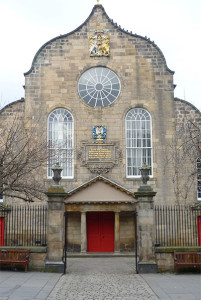 14. GRAVE OF SIR GEORGE SINCLAIR IN THE CANONGATE KIRK
14. GRAVE OF SIR GEORGE SINCLAIR IN THE CANONGATE KIRK
The grave of Sir George Sinclair is in the graveyard of this interesting church, where the Queen worships while in Edinburgh. The Church dates from the 17th century. The churchyard contains the remains of many notables. Sir William is of particular interest to Scottish Baptists as the founder of Keiss Baptist Church in Caithness, which is (at the time of writing) the oldest continuing Baptist Church in Scotland, although it may not continue much longer as an active church because of diminishing numbers. Sinclair’s grave is not marked but he is buried in the grave of Lord MacLeod, his Senior Officer in the army, named on the large stone just to the right of the entrance, near the boundary wall. Horatius Bonar, the hymn writer, is buried directly behind the MacLeod grave, where the church wall juts out.
Sir William became a Christian, and a Baptist, during military service in the south of England. On his return to Keiss he commenced services among his tenants and neighbours, and preached in the surrounding districts, though the diocese bishop mocked him as ‘The Preaching Knight’. He founded Keiss Church in 1750, the first Baptist church since the withdrawal of Cromwell’s soldiery ninety years before. Financial troubles compelled Sir William to leave Keiss for Edinburgh in 1763, where he died in 1768. (Revival, p. 2 and Sir William Sinclair.)
15. CHRISTOPHER ANDERSON’S MOTHER’S HOME, 53 HIGH STREET
Keep going up the hill, into the High Street (the Royal Mile), go through the traffic lights at St Mary’s Street, to see, on the right, one of Edinburgh’s oldest buildings, Moubray House – full details on its website; it is overshadowed by the more popular tourist attraction immediately to its right, John Knox’s House. Moubray House was the home of Christopher Anderson’s mother, Miss Jean Moubray, until her marriage. Jean Moubray father’s generous financial provision for her passed on her death to Christopher, and made him financially independent, free to pursue his life-work as evangelist and pastor. (Revival, p. 10 and Christopher Anderson’s parents.)
Continue up the High Street, passing on the right, immediately after the Moubray’s house, Carrubbers Christian Centre (no Baptist connection). Just before the traffic lights, turn left into Niddry Street and go down to the Cowgate. On the way down the hill, but no longer extant, was Skinners’ Close, in which a small English Baptist congregation met in the (now demolished) Skinners’ Hall, where Christopher Anderson started his life’s-work. (Revival, p. 15.)
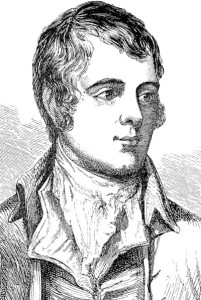
16. ST. CECILIA’S HALL
At the foot of Niddry Street, where it joins the Cowgate, is St. Cecilia’s Hall. In 1802, the Scotch Baptists purchased this building, and worshipped here for nine years until they outgrew the Hall and moved to their new-built church in the Pleasance in 1811. (Revival, p. 9.) All this is part of their ongoing development into what is now Bristo Baptist Church (section 26, below). The property now belongs to Edinburgh University and houses a unique collection of old-time musical instruments. In earlier times it was used for public entertainment, and Robert Burns is said to have danced here during his Edinburgh visit.
Then either turn left, to see, at the junction of the next street, Blackfriars Wynd, the site of Masons’ Hall, (Revival, p. 9), now a school, then u-turn to get to the Magdalene Chapel,
or turn right, and drive straight to:
17. MAGDALENE CHAPEL
On the left of the road, just before a mini-roundabout, is a Chapel with special interest for Baptists. In November 1765, the first congregation of Scotch Baptists met here. It is worth arranging in advance to go in and see it – the building is now owned by the Scottish Reformation Society 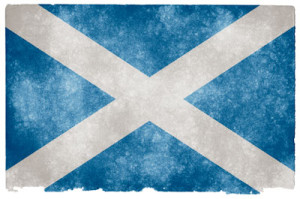 and is open to the public, by arrangement. This fascinating little Chapel was built and endowed in 1541. Baptists worshipped here regularly till 1774. (Revival, pp. 2-3.) There is much else in its history – see its website. See also ’Edinburgh’s Ecclesiastical Heritage’ on this website, First Walking Tour.
and is open to the public, by arrangement. This fascinating little Chapel was built and endowed in 1541. Baptists worshipped here regularly till 1774. (Revival, pp. 2-3.) There is much else in its history – see its website. See also ’Edinburgh’s Ecclesiastical Heritage’ on this website, First Walking Tour.
If it has been possible to park to visit the Magdalene Chapel, leave the vehicle and continue westward on foot, passing a small roundabout with a road uphill to the left (Candlemaker Row, section 20 below) and come into the wide area of the Grassmarket. The next two sights (18 and 19) are opposite each other near the junction of the Grassmarket with Victoria Street.
18. CHRISTOPHER ANDERSON’S FAMILY HOME
Christopher Anderson’s father’s house was on the first floor of 112 West Bow, on the left of the common entrance as you face it, over his ironmongery shop on the ground floor at number 110. The vennel into the flats is now called ‘Edmonstone’s Close’ and the shop is now a café called the ‘Mussel and Steak Bar’. (Revival, pp. 3-4 and Christopher Anderson’s home.)
19. THE ROCK MISSION
The present Grassmarket Hotel is directly opposite the Anderson shop and house. The outside is the same as it was when Charlotte Chapel provided free meals and a weekly service on these premises from 1952 to 1966. (Revival, pp. 199-200 (for the background), 288 and 387 and Rock Mission).
There is an option here, depending on whether you are in a coach or a car. If in a coach, go to the mini-roundabout near the Magdalene Chapel and drive up Candlemaker Row; coaches, not cars, allowed. If in a car, take the route described in the next paragraph but one.
If going up Candlemaker Row, see Christopher Anderson’s first manse on the left at number 37 – (on the map in Revival, p. iii, marked ‘16’). At the top of Candlemaker Row, look at the Hall described in section 20 below.
If driving by car, go up Victoria Street (one-way), turn right into George IV Bridge and drive a short distance, to where the statue of Greyfriars’ Bobby is on your right. The road to the right is Candlemaker Row, which coaches will have come up. Look at:
20. CANDLEMAKER HALL, SITE OF THE OLD SCOTS INDEPENDENT CHURCH
The Anderson family were brought up in this church and its minister, Robert Carmichael, left it to form the first continuing Baptist Church in Edinburgh. (Revival, p. 2, photo, p. 7 and Old Scots Independent Church.)
See Greyfriars’ Bobby (nothing to do with Baptists).
From there, both coaches and cars go into the one-way Bristo Place. As you approach the T-junction, on the left (not marked, but one of the buildings on the left) is the:
21. SITE OF BRISTO BAPTIST CHURCH FROM 1836 TO 1935
From this location, the present Bristo Baptist Church (section 26) took its name, keeping it when it re-located to its present site.
Turn right at the T-junction, then right again (one-way) and this brings you back to the top of Candlemaker Row; both coaches and cars may go down it. This brings you back to the Grassmarket. Turn left and drive along with the wide area on your right.
At the end of the wide area, there is a choice. If you want to see Archibald McLean’s grave, turn right into King’s Stables Road until a ‘No entry’ sign stops you. Instructions from there are in section 22 below. If you do not want to see the grave, keep straight on from the Grassmarket, go up the West Port, take first right at the traffic lights, right at the T-junction and then immediately left into Castle Terrace. Follow it round to the next T-junction (traffic lights).
Again, there is a choice. If you wish to see Central (Baptist) Church, turn left into Lothian Road and pick up the narrative at section 23 below. If not, turn right into Lothian Road, right into Princes Street and first left into South Charlotte Street and left into Charlotte Square. Park, and on foot you can see the buildings described in sections 24 and 25.
If walking is not possible for some of the party, it is possible to drive to the doors of both buildings (sections 24 and 25), but the routes are complex and are not described here – George Street, Castle Street and into Rose Street Lane for section 24 and Queensferry Street and then either Queensferry Street Lane or (even more complex) William Street and Coates Crescent for 25.
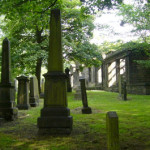 22. ARCHIBALD MCLEAN’S GRAVE IN ST. CUTHBERT’S GRAVEYARD
22. ARCHIBALD MCLEAN’S GRAVE IN ST. CUTHBERT’S GRAVEYARD
Park at the ‘No entry’ sign in King’s Stables Road and walk directly into the grounds of St Cuthbert’s Church. The memorial stone erected to Archibald McLean (1733–1812) (Revival, photograph p. 3.) is near the entrance, on a balcony. He is regarded as the Father of the Scotch Baptist Church and progenitor of the present Bristo Baptist Church. Close study led McLean to Baptist convictions and he withdrew from the established church. In 1767 he moved from Glasgow to new employment in Edinburgh, where he joined the new-formed Baptist church in the Magdalene Chapel (section 17). A few months later he was called to become co-pastor, and from 1768 until his death in 1812 he faithfully and fruitfully served and established the cause. Churches in Dundee, Glasgow, Montrose sprang from the Edinburgh mother-church. McLean furthered the work by many able, intensive writings. For these the University of Rhode Island offered him a Doctor’s degree, but this he declined.
James Haldane, of Tabernacle fame, is also buried in this churchyard. His memorial is built into the wall which divides the churchyard from the gardens. Robert Haldane is buried in Glasgow Cathedral.
To rejoin the Heritage Trail, go back to the Grassmarket and turn right into the West Port, take first right at the traffic lights, right at the T-junction and then immediately left into Castle Terrace. Follow it round to the next T-junction (traffic lights).
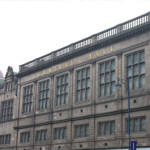 23. CENTRAL (BAPTIST) CHURCH, TOLLCROSS
23. CENTRAL (BAPTIST) CHURCH, TOLLCROSS
As mentioned at section 21, f you wish to see this church, turn left from Castle Terrace into Lothian Road. Morningside Baptist Church moved in 2011 from Morningside to the Central Hall in Tollcross, built by the Methodist Church in 1901, refurbished it and now operate under the name simply ‘Central’.
From here, drive back down Lothian Road, turn right into Princes Street and first left up South Charlotte Street and left into Charlotte Square. Park where you can and see the buildings described in sections 24 and 25 on foot.
24. THE FORMER CHARLOTTE CHAPEL, 204 ROSE STREET
After parking in Charlotte Square, walk to Rose Street, the narrow street halfway between Princes Street and George Street. At the time of writing, the congregation of Charlotte Chapel has just moved to Shandwick Place and it is not known what the purchasers of the building will do with it. The present building, from 1912, replaced an earlier Charlotte Chapel on the same site, which Christopher Anderson bought in 1818. The full story is told in Revival.
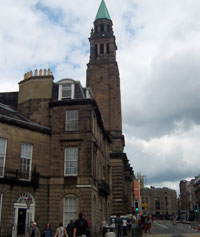 25. CHARLOTTE CHAPEL, SHANDWICK PLACE
25. CHARLOTTE CHAPEL, SHANDWICK PLACE
This is one of hundreds of new church buildings in Scotland in the middle of the nineteenth-century, following the Disruption in the Church of Scotland and the formation of the Free Church of Scotland in 1843. One of the leaders of the Disruption was Robert Candlish, minister of St. George’s Church in Charlotte Square so, not surprisingly, when he and those who left with him built the new church in 1869 they called it Free St. George’s. The tower was added thirteen years later, modeled on the campanile of San Giorgio Maggiore in Venice. About the same time the Rose window was installed in the apse. Until 1897 worship was led by a precentor, and then the organ was installed and electric light was first used.
When they and many other congregations rejoined the National Church in 1929, it wasn’t appropriate to continue to call it Free St George’s, and it became St George’s West. In January 2010, because of dimishing numbers attending both St George’s West and St Andrew’s in George Street, they merged to become St Andrew’s and St George’s and they voted to use the George Street building. In 2013, Charlotte Chapel purchased the building for £1.55 million and modernised it, and the first service was held in May 2016.
Return to the vehicle in Charlotte Square and drive out by the south-west corner into Hope Street, through traffic lights into Queensferry Street and follow the main road through two sets of traffic lights and over the Dean Bridge. Follow the main road to the next set of traffic lights. Just before them, turn left into Buckingham Terrace and on your right is:
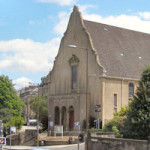 26. BRISTO BAPTIST CHURCH
26. BRISTO BAPTIST CHURCH
The oldest enduring Baptist Church in Edinburgh. After meeting in the Magdalene Chapel in the Cowgate (section 17, above), the church built Richmond Court Chapel in 1787; it was the first place of worship erected by Baptists in Scotland, later sold to Christopher Anderson, now demolished. (Revival, p. 16.) Then they bought St Cecilia’s Hall, Niddry Wynd (section 16, above) in 1802, as Richmond Court had become too small. They sold St Cecilia’s Hall to the Freemasons in 1809 and met in the Old High School, Infirmary Street, until the Pleasance Chapel was completed (also now demolished). They occupied this from 1811 until 1834, then moved back to St Cecilia’s Hall, pending the opening of the Chapel in Bristo Place in 1836 (section 21, above). The church was there until they moved to present building in 1935 and they retained the name ‘Bristo’. See also the section ‘Edinburgh’s Ecclesiastical Heritage’ on this website, last entry in the First Walk.
That concludes the Heritage Trail.
